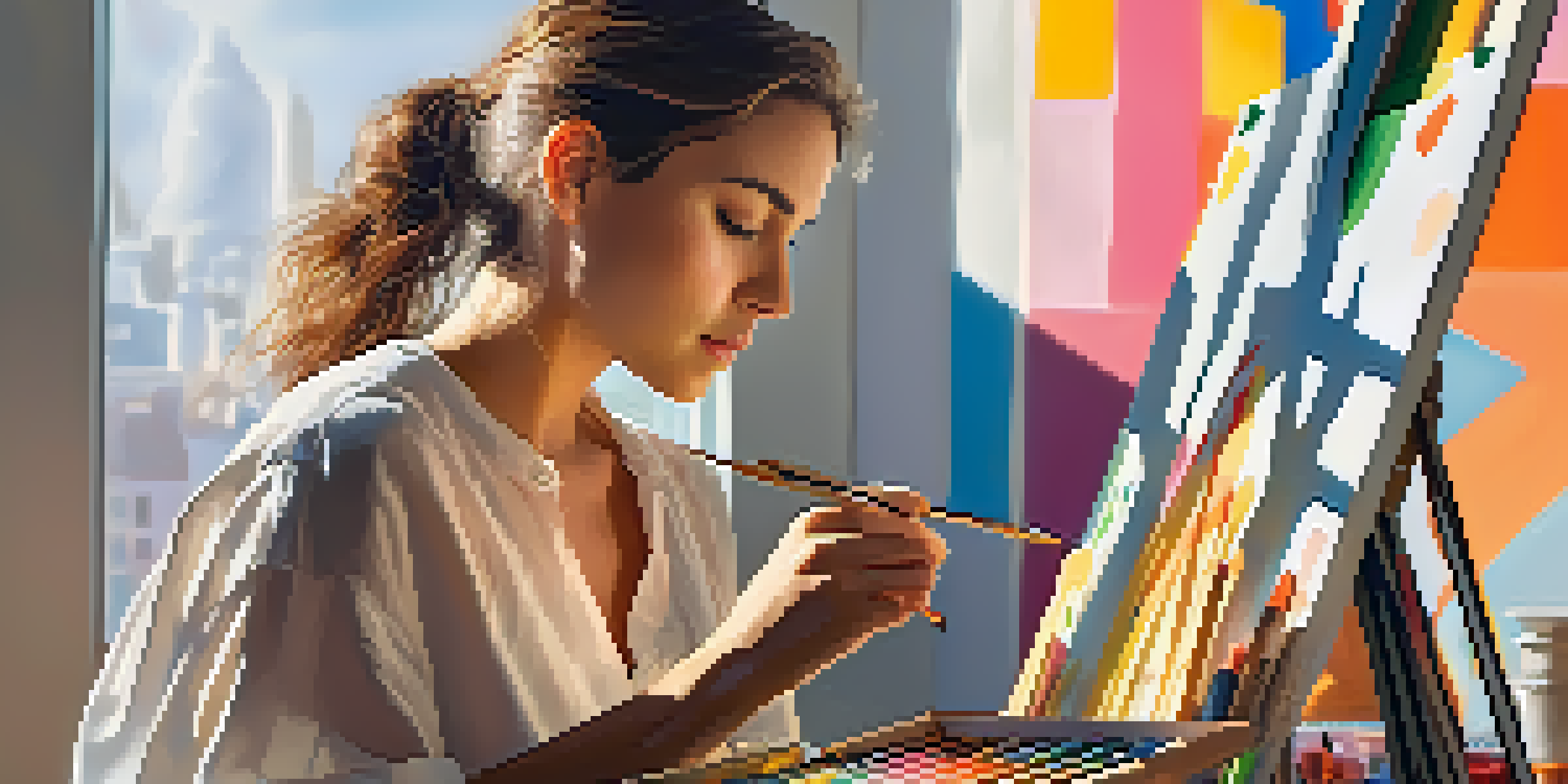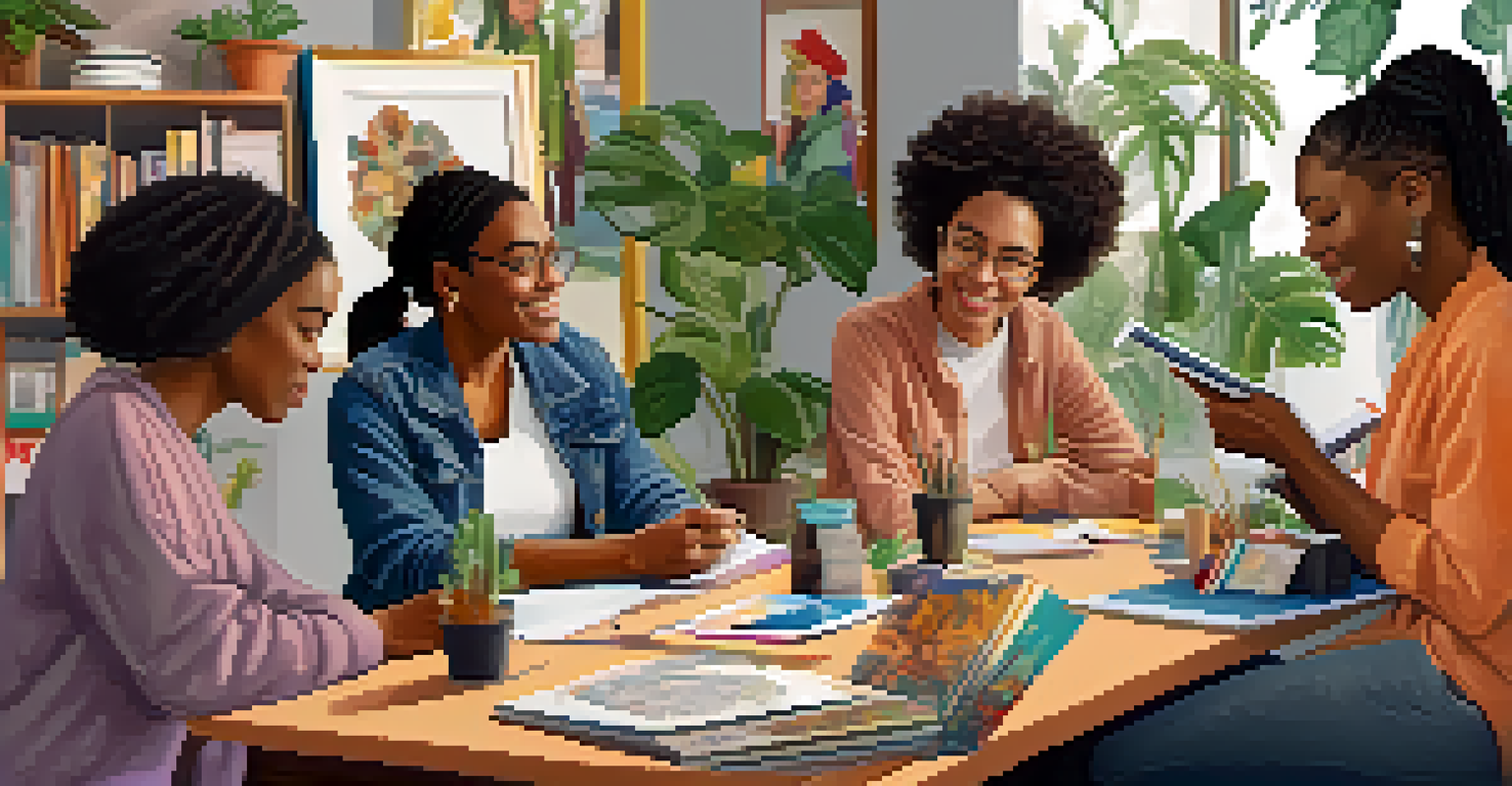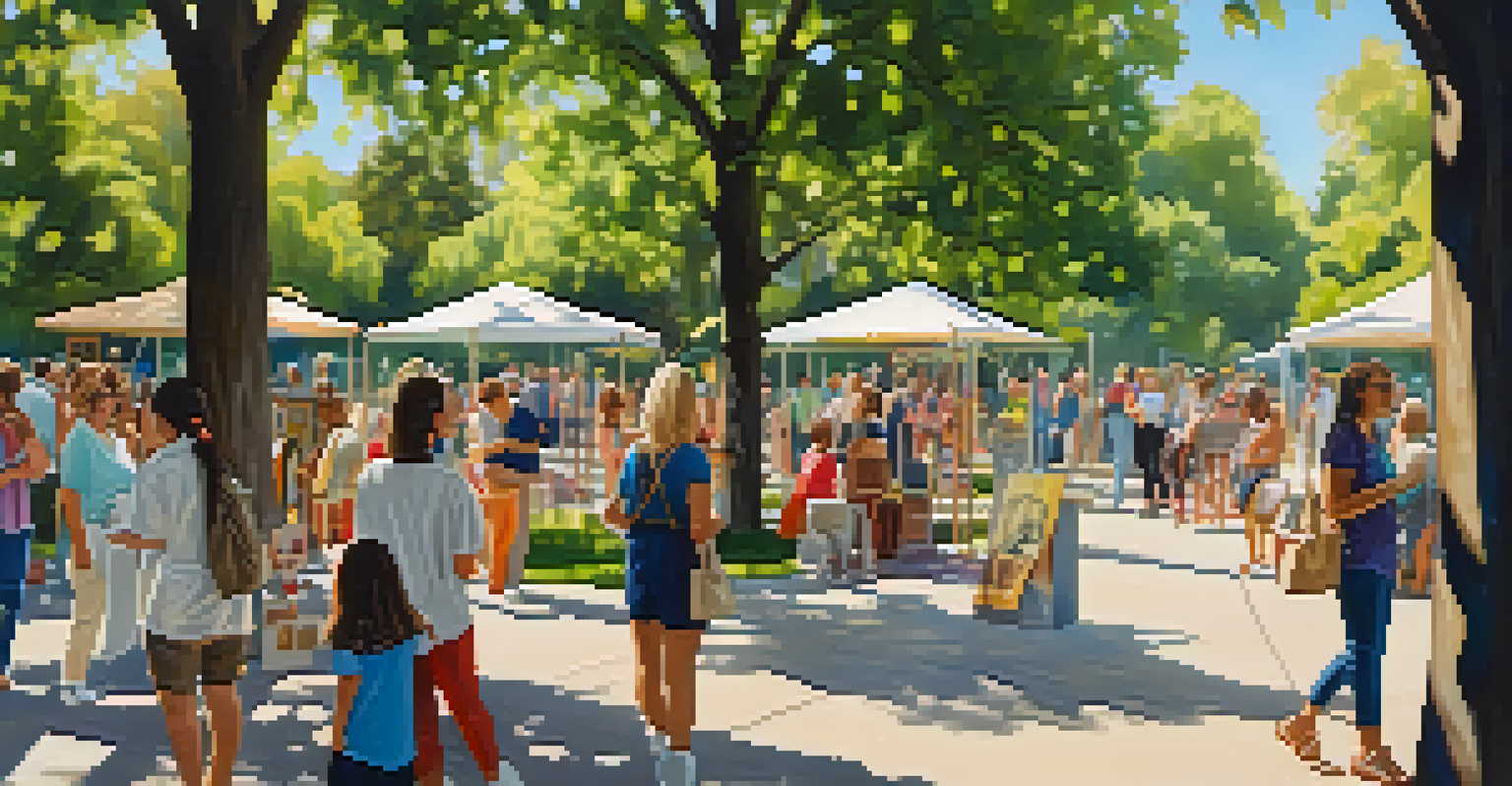The Influence of Gender on Art Funding and Grants

Understanding the Gender Gap in Art Funding
The gender gap in art funding is a significant issue that has persisted over the years. Women artists often face challenges in securing grants and funding compared to their male counterparts. This disparity can be attributed to a variety of factors, including biases in the selection process and a lack of representation in leadership roles within funding organizations.
Art is not freedom from discipline, but disciplined freedom.
Research indicates that funding bodies may unconsciously favor male artists, perpetuating a cycle of inequality. This means that even when women submit equally impressive portfolios, they may be overlooked due to ingrained biases. As a result, many talented female artists struggle to find the financial support necessary to advance their careers.
Addressing the gender gap in art funding is essential for fostering a more inclusive art community. By recognizing and rectifying these biases, funding organizations can help create a more equitable landscape for artists of all genders, ensuring that diverse voices and perspectives are represented in the art world.
The Role of Gender in Grant Selection Processes
Grant selection processes often reflect the prevailing gender norms in society, which can lead to unintentional biases. Panels making funding decisions may not always be diverse, impacting the types of projects that receive support. When the majority of decision-makers are of one gender, it can skew the evaluation of proposals, favoring those that align with their experiences and perspectives.

Moreover, the criteria used for evaluating applications can unintentionally favor male artists’ work, further marginalizing women artists. For instance, if the criteria prioritize certain styles or themes traditionally associated with male artists, women may find it challenging to meet those expectations. This creates a barrier that can discourage female artists from applying for funding in the first place.
Gender Bias in Art Funding
Women artists often struggle to secure grants due to unconscious biases in funding processes.
To combat this issue, it's crucial for funding organizations to adopt more inclusive evaluation practices. By diversifying selection panels and critically examining evaluation criteria, they can create an environment where all artists have an equal opportunity to secure funding.
Impact of Gender on Funding Amounts and Opportunities
Gender not only influences whether artists receive funding but also the amounts they are awarded. Studies have shown that women artists frequently receive smaller grants compared to their male peers, which can hinder their creative projects. This discrepancy can have long-term effects on the visibility and sustainability of women’s contributions to the art world.
The role of the artist is to make the revolution irresistible.
Additionally, the types of opportunities available can vary significantly based on gender. Women may find themselves receiving funding for community-based projects rather than larger, high-profile exhibitions. This can limit their exposure and potential career advancement, reinforcing the notion that women are less capable of handling major artistic endeavors.
To promote equity, funding organizations must strive to offer equal funding amounts and diverse opportunities. By ensuring that women have access to the same resources as men, the art world can begin to level the playing field and foster a richer, more diverse artistic landscape.
Case Studies: Successful Women Artists and Funding
Examining the journeys of successful women artists can provide valuable insights into how they navigate the funding landscape. Many of these artists have developed innovative strategies to secure grants and funding by building strong networks and showcasing their work effectively. Their experiences highlight the importance of perseverance and adaptability in overcoming systemic barriers.
For instance, artist X utilized social media to amplify her work, attracting attention from grant organizations that value contemporary platforms. By engaging with her audience and demonstrating her impact on the community, she successfully secured funding for her projects. This approach exemplifies how women artists can leverage modern tools to enhance their visibility and appeal to funders.
Need for Inclusive Practices
Diverse evaluation criteria and selection panels are essential for creating equitable funding opportunities for all artists.
These success stories serve as inspiration for emerging female artists, showing that while challenges remain, they can be overcome. By learning from the experiences of others and fostering supportive networks, women can increase their chances of securing funding and making a lasting impact in the art world.
Shifting Perspectives: The Importance of Inclusivity
As the art world evolves, there is a growing recognition of the need for inclusivity in funding practices. An inclusive approach not only benefits female artists but enriches the entire art community by promoting diverse perspectives. When funding organizations prioritize inclusivity, they create a platform for underrepresented voices, ultimately leading to a more vibrant and multifaceted art scene.
Inclusivity also encourages collaboration among artists of different genders, fostering a spirit of innovation and creativity. By supporting diverse projects, funding bodies can help break down barriers and encourage dialogue between artists, leading to new ideas and artistic expressions. This collaborative approach can transform the art landscape, making it more reflective of our diverse society.
Promoting inclusivity in funding practices requires commitment and intentionality. Funding organizations must continually assess their policies and practices, ensuring they align with the goal of supporting all artists, regardless of gender. This shift in perspective is vital for creating a more equitable and thriving art community.
The Future of Gender and Art Funding
The future of art funding is closely tied to how effectively we address gender disparities today. As awareness of these issues grows, there is a push for change within funding organizations and the broader art community. This momentum creates opportunities for women artists to gain visibility and secure the resources they need to thrive.
Emerging trends suggest a shift towards more equitable funding practices, with organizations increasingly committing to diversity and inclusion initiatives. By actively seeking out and supporting female artists, these organizations can help reshape the narrative around gender in the art world. This proactive approach signals a promising future for artists of all genders, paving the way for greater representation and recognition.
Empowering Women Artists
Promoting inclusivity in funding not only supports female artists but enriches the entire art community.
Ultimately, fostering a more equitable art funding environment will require collective effort from artists, organizations, and audiences alike. By championing diversity and inclusivity, we can work towards a future where every artist, regardless of gender, has the opportunity to shine and contribute to the rich tapestry of our cultural landscape.
Conclusion: Empowering Women in the Art World
In conclusion, addressing the influence of gender on art funding and grants is crucial for empowering women artists. By acknowledging the challenges they face and actively working to create equitable funding practices, we can foster a more inclusive art community. This effort not only supports female artists but enriches the art world as a whole, allowing diverse voices to emerge.
It’s essential for both funding organizations and the broader public to advocate for change. By championing women’s contributions to art and holding organizations accountable for equitable practices, we can ensure that talented artists receive the recognition and support they deserve. Together, we can create an environment where all artists feel valued and empowered to express their creativity.

As we move forward, let’s continue to raise awareness about these issues and work towards a more equitable future for all artists, regardless of gender. The art world has the potential to be a powerful platform for change, and by supporting each other, we can drive progress and foster a thriving artistic community.